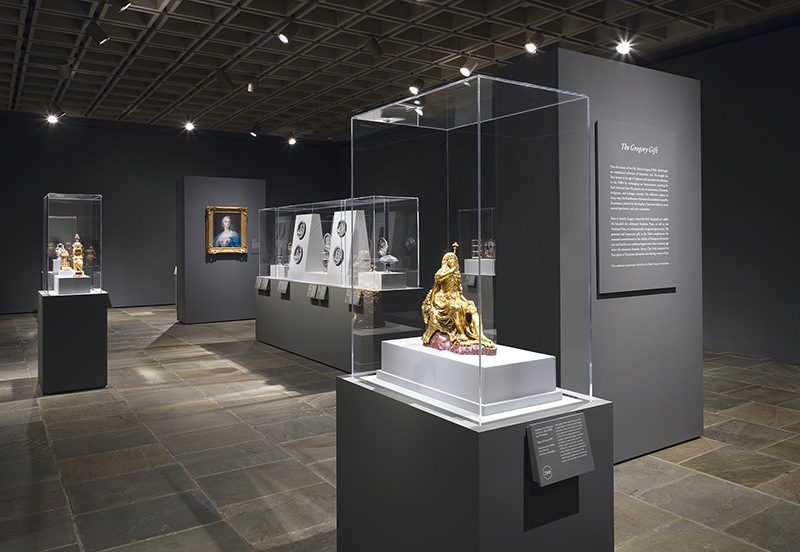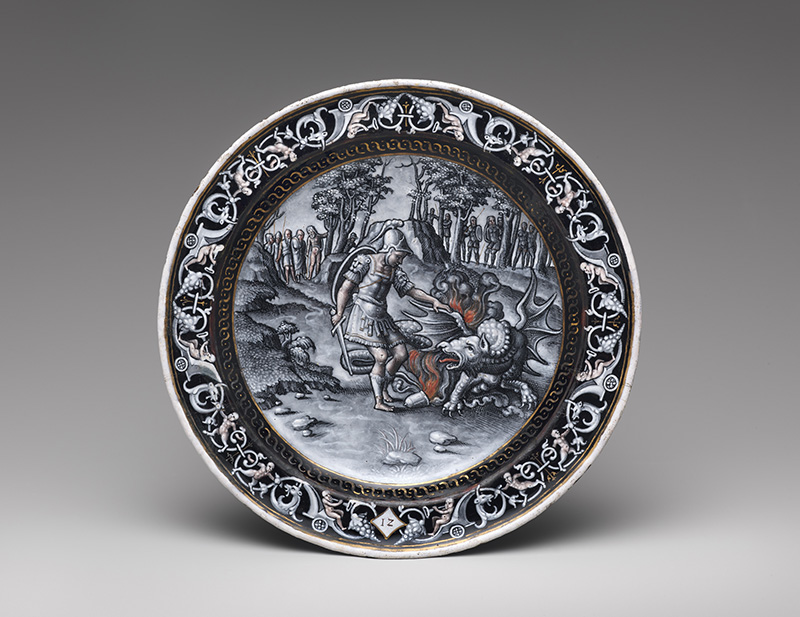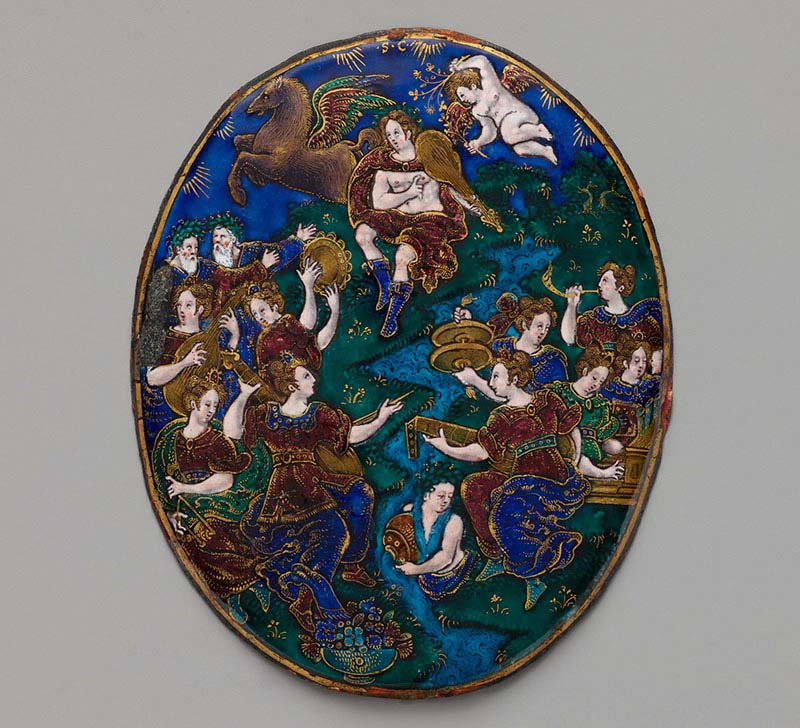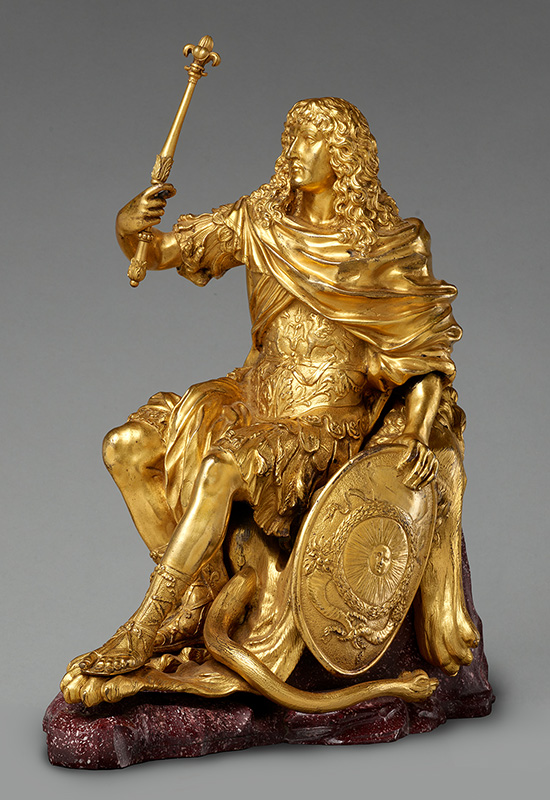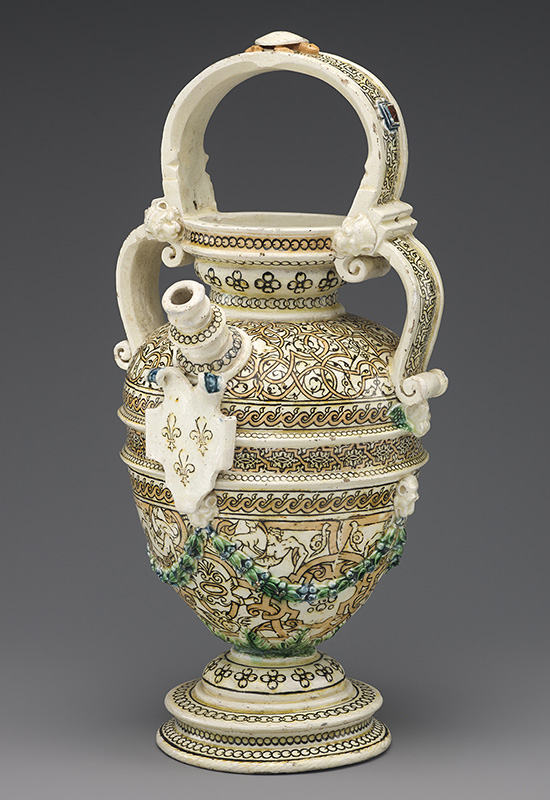The Gregory Gift: New Decorative Arts Exhibition at Frick Madison
by Marie-Laure Buku Pongo
Currently on display at Frick Madison, the temporary home of The Frick Collection, is a varied assemblage of decorative objects from the bequest of Alexis Gregory, the founder of Vendome Press and a longtime friend of the museum. Gregory built an important collection of decorative arts and was often described by those close to him as a Renaissance man, as he spoke several languages, wrote books, and traveled widely in search of fine acquisitions. Ranging in date from the 16th through the 18th centuries, the 28 works on view in The Gregory Gift (figure 1) recall a Renaissance Kunstkammer, in which pieces are carefully selected for their high quality, diverse origins and materials, and significant provenance.
Gregory’s generous bequest deepens the Frick’s holdings in numerous media while simultaneously introducing artists and objects not previously represented. These significant additions have opened new areas of research into the context of their creation and prompted technical analyses expanding our knowledge of how these and related objects were produced.
A highlight of the gift is a group of 15 Limoges enamels (figure 2), which includes a number of dishes painted primarily in the sober black, gray, and white tones known as grisaille. The group complements a large number of vividly colored enamels in the museum’s permanent collection, which were acquired by founder Henry Clay Frick in 1916 from the estate of J. P. Morgan.
Gregory’s bequest also brings to the Frick an enameled oval medallion (figure 3) by Suzanne de Court, the only woman known to have run a workshop in Limoges during the late 16th and early 17th centuries. Depicting Apollo and the nine Muses, the medallion joins a notable pair of salt cellars in the permanent collection that are signed by the same maker.
Other rare objects are highlights of the exhibition, including a gilt-bronze figure of Louis XIV (figure 4) wearing armor, a draped cloak, and holding a shield with emblems of Apollo. Attributed to Domenico Cucci and his workshop, the bronze was likely part of the Cabinet of Apollo, made for the king in 1662–64 to celebrate his victory against Spain. What’s more, a three-handled Saint-Porchaire faience ewer (figure 5) joins two Saint-Porchaire objects already in the collection, one acquired by Henry Clay Frick and the other by the museum in 2015. This addition is particularly significant as only about 70 works from this short-lived production survive today.
Figure 4. Attributed to Domenico Cucci and workshop, Manufacture des Gobelins, Figure of Louis XIV, 1662–1664, Paris. Gilt bronze, on a porphyry base. The Frick Collection, Gift of Alexis Gregory, 2021. Photo by Joseph Coscia Jr.
One of two fine clocks featured in The Gregory Gift is a musical automaton clock with a rhinoceros figure by James Cox (figure 6). Among the most prominent jewelers and goldsmiths in London during the 18th century, Cox crafted automatons with musical movements that were exported to China, India, Persia, and Russia. The whimsical gilt-bronze rhinoceros is modeled after a celebrated 1515 print by Albrecht Dürer. One can experience the music and movement in this video.
The addition of these objects from Alexis Gregory’s collection builds on the original bequest of Henry Clay Frick, who began collecting European decorative arts late in life, with the intention of furnishing his new home at 1 East 70th Street (the museum’s historic building, which is currently undergoing renovation). On view through mid-summer, the exhibition celebrates Gregory’s connoisseurship and reaffirms the Frick’s commitment to the display of European decorative arts.
Marie-Laure Buku Pongo is the Assistant Curator of Decorative Arts at The Frick Collection.
About The Decorative Arts Trust Bulletin
Formerly known as the "blog,” the Bulletin features new research and scholarship, travelogues, book reviews, and museum and gallery exhibitions. The Bulletin complements The Magazine of the Decorative Arts Trust, our biannual members publication.
Click Images to Enlarge
Did you know that clicking on the images in Bulletin posts will allow you to get a closer look? Simply click on an image, and a larger version will open in a pop-up window.








